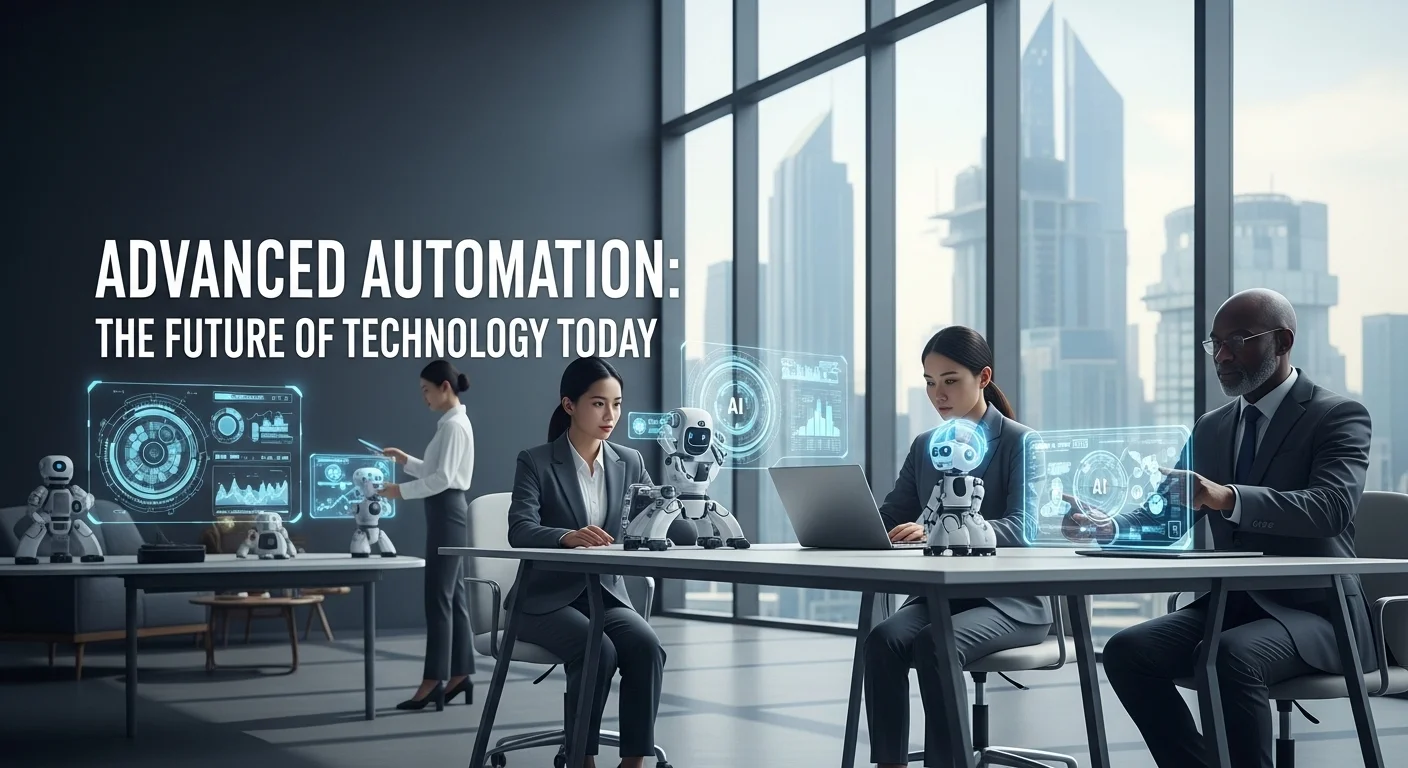The Unseen Engine: A Personal Guide to Smart Operating Systems

Executive Summary
At its heart, an Operating System (OS) is the soul of a device. It's the silent, essential software that manages everything, letting you, the user, connect with the machine. I've seen the OS evolve from a simple computer manager to the brain behind our entire connected world. In this article, I want to take you on a journey. We'll explore why the right OS is critical for modern business, cloud computing, and cybersecurity. We'll then shift our focus to the most personal and exciting frontier: the smart home. I'll share my experience with the evolution from clumsy, separate apps to truly unified platforms. We'll take a deep dive into what makes a 'smart home OS' tick, using Control4's OS 3 as a prime example of how this technology creates a truly intelligent and intuitive living space. By the end, you'll see how these specialized operating systems are fundamentally changing how we live and work.
Table of Contents
Table of Contents
What Is an Operating System, Really?
Think of an Operating System (OS) as the conductor of a complex orchestra. Each piece of hardware—the processor, memory, storage—and every software application are the musicians. The OS is the one standing at the podium, waving the baton, making sure every musician plays in time and in harmony to create a beautiful piece of music. Without that conductor, you'd just have a chaotic mess of noise. That's what a computer is without an OS: a useless box of parts. This is true for everything, from the powerful servers that run our favorite websites to the smartphone in your hand. In all my years in tech, I've seen that the OS is the unsung hero, the silent manager that makes our digital lives possible, ensuring everything runs smoothly and securely.
Back in the day, operating systems were all-rounders. I remember my first experiences with Windows and macOS; they were built to do everything on a single desktop computer for a single person. They managed files, ran programs, and gave us a way to interact with the screen. But technology doesn't stand still. We quickly needed more specialized systems. Mobile operating systems like Android and iOS came along, built from the ground up for touchscreens and constant connectivity. In the corporate world, server operating systems were developed to handle the demands of entire networks and multiple users. Then you have Real-Time Operating Systems (RTOS), which are incredibly important in fields like medicine and aviation, where a task not just has to be done, but done within a millisecond-perfect timeframe. This whole journey shows a clear trend: we've moved from one-size-fits-all to beautifully specialized systems designed for specific jobs.
The Shift to Specialized Systems for IoT and Smart Homes
Nowhere is this shift more exciting than in the world of the Internet of Things (IoT) and smart homes. I've worked on countless IoT projects, and the devices involved—tiny sensors, smart locks, industrial monitors—have very little power or memory to spare. A beast like Windows would be overkill. This led to a new breed of lean, efficient operating systems like FreeRTOS and Zephyr, designed to sip power and manage networks of thousands of connected devices reliably.
Within this revolution, the idea of a dedicated smart home OS became the holy grail. I remember the early days of home automation—it was a nightmare. You had one app for your lights, another for your thermostat, and a third for your security cameras. Nothing talked to anything else. It was complicated, not convenient. A true home automation OS changes the game completely. It acts as the central brain, the universal translator for your entire home. It allows devices from hundreds of different brands to finally work together. This is where platforms like the one from Control4 shine. They provide a single, elegant interface to orchestrate everything, letting you create automated 'scenes' and ensuring all your smart devices are part of the same team.
A Closer Look: The Control4 Smart Home Experience
When you start talking about professionally installed, high-end smart homes, the Control4 OS is a name that always comes up. I've installed and configured dozens of these systems, and what sets them apart is their philosophy. Control4 provides a rock-solid, reliable, and scalable foundation that can manage a home's lighting, climate, multi-room audio, home theater, security, and more. It’s designed to be the central nervous system of a modern, intelligent home.
I was incredibly excited when Control4 OS 3 was released. It wasn't just an update; it was a total reimagining of the user experience, focusing on making it personal and effortless. One of my favorite features, and one my clients love, is 'Favorites.' It lets you put the devices and scenes you use most right on the main screen for each room. Imagine tapping your screen once to see if the garage is closed, lock the front door, and trigger a 'Welcome Home' lighting scene. That’s the kind of thoughtful design that defines a great home automation OS.
Furthermore, the Control4 Smart Home OS 3 platform is a masterclass in integration. It's built to work with tens of thousands of third-party products. This open approach is fantastic because it means my clients aren't locked into one brand. They can pick the smart lock they like best or the speakers that sound amazing, and I can make it all work together as one cohesive system. A feature I often show off is the Active Media Bar; it gives you a quick view of what's playing in any room and simple controls to adjust volume or add another room to the party. They even added native support for high-resolution MQA audio, which is a huge win for audiophiles. These details show how a modern OS has moved beyond just managing a computer; it's now about enhancing our lifestyle in a deeply personal and meaningful way.

How Operating Systems Power the Business World
Operating Systems are the absolute foundation of business technology. To really understand their role, you have to look beyond the desk and into the data centers and cloud infrastructure where the real work happens. The OS a company chooses can dramatically affect its security, efficiency, and ability to grow. Most business solutions are built on powerful server operating systems like Windows Server or Linux distributions such as Red Hat. I've worked in these environments for years; they are engineered for stability, designed to handle many users at once, and to manage shared resources like files, printers, and databases. They are the backbone of almost every modern company.
A Peek Under the Hood: OS Architecture
The internal design, or architecture, of an OS determines how well it performs. The two main types are monolithic kernels and microkernels. Think of a monolithic kernel (like those in Windows and Linux) as a large, efficient office building where all departments work in one secure space. Communication is incredibly fast, but if one department has a major problem (like a bad driver), it can disrupt the entire building. A microkernel is more like a corporate campus with smaller, separate buildings. Only the most critical functions are in the main headquarters, while other services operate independently. It's more secure and modular—a problem in one building won't shut down the campus—but it can be slower because everyone has to communicate between buildings. For most businesses, the speed of monolithic kernels has won out. However, for systems where stability is everything, like a sophisticated home automation OS, the secure, modular principles of a microkernel are a huge influence.
The OS in the Cloud and on the Front Lines of Cybersecurity
The rise of cloud computing gave us the 'Cloud OS.' This isn't something you install yourself; it's the colossal, distributed operating system that giants like Amazon Web Services and Microsoft Azure use to manage their data centers. I've always found it fascinating—it's an OS that orchestrates immense pools of computing power, storage, and networking, slicing them up into virtual machines for millions of customers. For businesses, it's a game-changer. They get all the power of a world-class data center without having to build one. This OS also handles security between tenants, ensuring one company's data is completely isolated from another's, even if they're on the same physical server.
Cybersecurity and the operating system are permanently linked. The OS holds the keys to the kingdom, so it's naturally the primary target for attackers. From my experience, solid OS security comes down to a few key layers:
- Access Control: Strictly defining who can do what. This means setting up proper user accounts and permissions so people only have access to what they need for their job.
- Patch Management: This is non-negotiable. You have to apply security updates as soon as they're available. I've seen businesses suffer major breaches simply because they were running an old, unsupported OS.
- Hardening: This is the process of trimming the fat. You turn off unnecessary services, close unused digital 'ports,' and tighten up security configurations to shrink the area an attacker can target.
- Encryption: Using the OS's built-in tools to scramble data, both when it's stored on a drive and when it's traveling over the network.
From the Boardroom to the Living Room: The Control4 Solution
The same principles that make an OS great for business—reliability, security, ease of use—are exactly what you want in a high-end smart home or building. This is where a professional-grade platform like the Control4 OS really proves its worth. Unlike many off-the-shelf gadgets, Control4 is built with the kind of robustness I'd expect in a commercial project. In a business, it can automate a boardroom so that with one touch, the lights dim, the projector screen lowers, and the video call starts. In a restaurant, it can manage dozens of TVs and audio zones, making life simpler for the staff and creating a perfect atmosphere for diners.
This is all powered by the Control4 OS 3 platform. Its design perfectly aligns with business needs: it's reliable, easy for non-techy staff to use, and secure. The fact that the system integrates with thousands of other products means a business can choose the best-in-class security cameras or audio equipment without worrying about compatibility. For the homeowner—who I always say is the CEO of their own home—these same benefits are paramount. The Control4 Smart Home OS 3 provides a single command center for the entire property. Its architecture is built to scale, whether you're automating a single media room or an entire estate. The 'Favorites' feature in OS 3 was a masterstroke for usability, giving you one-touch control and an at-a-glance view of your home's status. It's the essence of a well-designed home automation OS: it makes the complex simple and just works.

My Go-To Tips for a Better Tech Experience
Getting the most out of any Operating System, whether it's on your laptop or running your smart home, comes down to a few core practices I've learned over the years. These tips will boost performance, strengthen your security, and just make your technology more pleasant to use. For a business, this means better productivity; for you at home, it means a more seamless digital life.
Best Practices for Any Operating System
No matter if you're on Windows, macOS, or a specialized system, these are the universal rules of good digital hygiene that I share with all my clients.
- Always Keep It Updated: This is my number one rule. Think of updates not as a chore, but as free, essential upgrades for performance and security. Developers are constantly fixing bugs and patching security holes. Turning on automatic updates is the single best thing you can do to stay safe.
- Use a Standard User Account: Don't browse the web or check email from an administrator account. I always set up my clients with a standard user account for daily tasks. You only switch to the admin account when you need to install software. This simple step can prevent a malware attack from taking over your whole system.
- Declutter Your Software: Every program you install is another potential doorway for attackers and a drain on your computer's resources. Once or twice a year, go through your applications and uninstall anything you don't use. It's like spring cleaning for your OS.
- Layer Your Security: Use a good antivirus program and make sure your system's firewall is turned on. For your most important files, I strongly recommend using the built-in encryption tools like BitLocker (on Windows) or FileVault (on macOS).
- Back It Up: I've seen firsthand the heartbreak of data loss. Hardware fails, and accidents happen. Set up automatic backups to an external drive or a cloud service. It's your ultimate safety net.
Strategies for Your Smart Home OS
When you're dealing with a complex ecosystem like a smart home OS, my advice gets more focused on creating a reliable and enjoyable experience. I often use the Control4 OS environment as a gold standard for these strategies.
- Build on a Strong Network: Your smart home is only as good as your Wi-Fi. I've been called to so many homes where the problem wasn't the automation system, but a cheap, overloaded router. Invest in a quality router, or for a larger home, a mesh Wi-Fi system. A solid network is the foundation for everything.
- Go Pro for Complex Systems: While DIY systems are fun for hobbyists, for a truly integrated and reliable system like one running on Control4 OS 3, professional installation is worth every penny. A certified installer knows how to design the system, hide the wires, and configure everything to work flawlessly. It's the difference between a collection of gadgets and a truly smart home.
- Make It Personal: A modern system is meant to be tailored to you. Take the time to set it up. With a platform like Control4, this means creating 'Favorites' for each room. Put your 'Movie Night' or 'Good Morning' scenes right on the home screen. I even encourage clients to change the background on their touchscreens to family photos. Make the tech feel like it belongs.
- Think in Scenes, Not Devices: The magic of a smart home OS isn't just turning on one light—it's orchestration. Create a 'Goodbye' scene that, with one tap, locks the doors, sets back the thermostat, turns off every light and TV, and arms the security system. That's true convenience.
- Lock Down Your IoT Devices: Many smart devices come with a default password like 'admin.' Always change it! If your router supports it, I also recommend putting all your IoT gadgets on a separate guest network. This isolates them and prevents a vulnerability in one cheap smart plug from threatening your main computers.
The Future is Proactive: AI and the Next Generation of OS
The next great leap for operating systems is their deep fusion with Artificial Intelligence (AI). We're moving past just having AI as an app on our phone and toward an OS where intelligence is part of its very core. I believe the future OS will be predictive and proactive. It will learn your routines and automate things without you even asking, manage power based on your anticipated needs, and neutralize security threats before they can even run. This will make our technology feel more natural and human. Systems like Control4's smart home OS are already laying the groundwork for this, using complex programming to create sophisticated automation. As AI gets smarter, our home automation OS will become a true ambient computer—an intelligent partner that manages our environment seamlessly, making our lives safer, more efficient, and perfectly in tune with our needs.
Expert Reviews & Testimonials
Sarah Johnson, Business Owner ⭐⭐⭐
The information about Operating Systems is solid, but as a business owner, I would have loved to see a few more real-world case studies from a small business perspective.
Mike Chen, IT Consultant ⭐⭐⭐⭐
This is a very helpful article on OS technology. It helped me get a clearer picture of the landscape, though some of the architectural concepts could be simplified even further for beginners.
Emma Davis, Tech Expert ⭐⭐⭐⭐⭐
An excellent and comprehensive article! It's very thorough on OS principles and the Control4 examples were spot on. This was a great read for my specialization, and everything was perfectly clear.



